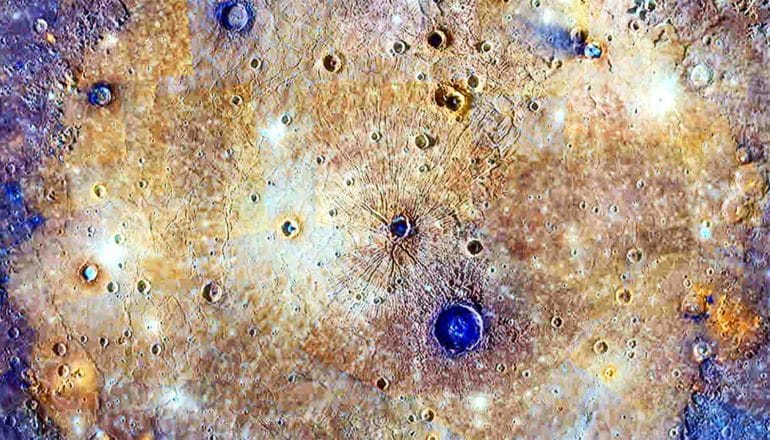
Looking for evidence of volcanic activity might be a great place to start to narrow down the search for Earth-like planets in a vast universe, researchers report.
While the technology we have right now can’t tell if volcanic activity is happening on distant worlds, data from planets in our inner solar system might give us a way to identify volcanically active worlds based on other features or characteristics we currently can detect, says Paul Byrne, a planetary geologist at North Carolina State University.
As reported in Nature Astronomy, Byrne looked at the ways volcanism on rocky planets—like Earth, Venus, Mars, Mercury, and our moon—changes over time, and found that planetary size and age work pretty well as indicators of volcanic activity.
“Radioactive decay in the planet’s core drives volcanism on all of these worlds, but the style and location change over time,” Byrne says. “So it’s not as simple as saying that when you have a big world and a small one, the small one cools down faster and just shuts off. There are changes before that.”
The phenomenon of global contraction is one of the biggest changes—and that’s where Mercury comes in. Mercury doesn’t have multiple plates covering it like Earth does—its crust is one big plate, a hard shell encasing a molten core. As Mercury aged and cooled, the shell contracted.
Looking at volcanic and tectonic landforms of Mercury, Byrne saw that the contraction of Mercury’s surface effectively shut off surface volcanism by closing off any routes for lava to get to the planet’s surface.
“While all of the lava flows we see are super old—Mercury stopped being volcanically active 3.5 billion years ago—you see that the most recent evidence of volcanic activity only occurred in places where there are impact craters, places where the shell is thin or damaged,” Byrne says.
“And you see a similar pattern on the moon, which is also one big plate like Mercury, and which stopped being volcanically active between 2.5 and 3 billion years ago. They might still be producing melt internally, but if the whole planet has started to contract, it can’t come out.”
By comparing volcanic activity on the moon and Mercury to Mars, Earth, and Venus, Byrne says, we can start to set some guidelines for how volcanic activity changes on rocky planets over time. And these guidelines can help us focus on planetary systems that may be more likely to contain planets similar to ours.
“So if you were to look for lava—for volcanism—on planets that are about the same age as Earth per this analysis, the smaller ones like Mercury and the moon are bad places to look,” Byrne says.
“It might seem kind of obvious that the bigger you are, the longer you have lava, but other comparative analyses have shown that there’s no one straightforward equation that says if a planet is a certain size it has lava for a certain time period. It’s not that easy.
“But if you’re looking for lava specifically due to radioactive decay on rocky planets—which is what you would look for if you wanted to find something Earth-like—you can still make some broad generalizations. You either look for young planetary systems or you look for the bigger planets in older systems.”
Source: NC State
The post Mercury’s volcanic activity may point to Earth-like worlds appeared first on Futurity.
from Futurity https://ift.tt/36MMzdo
No comments:
Post a Comment